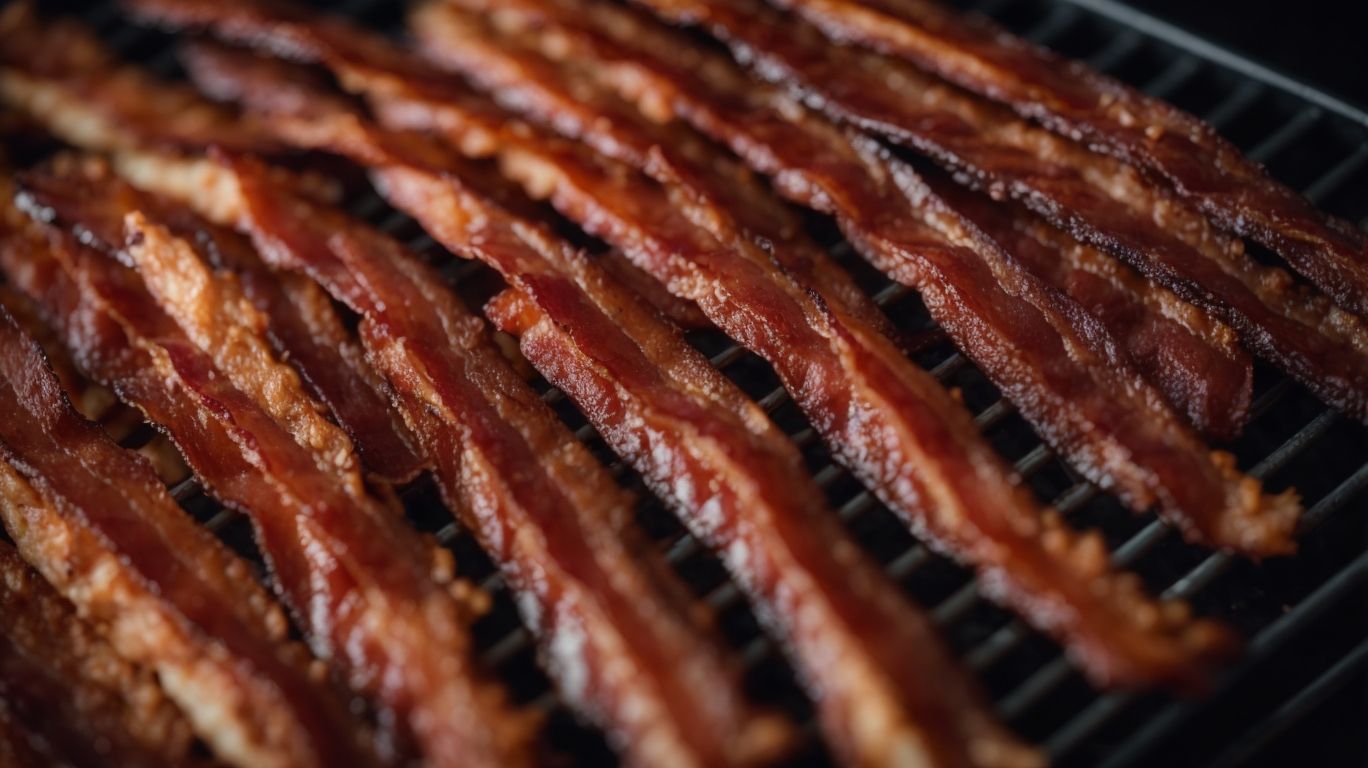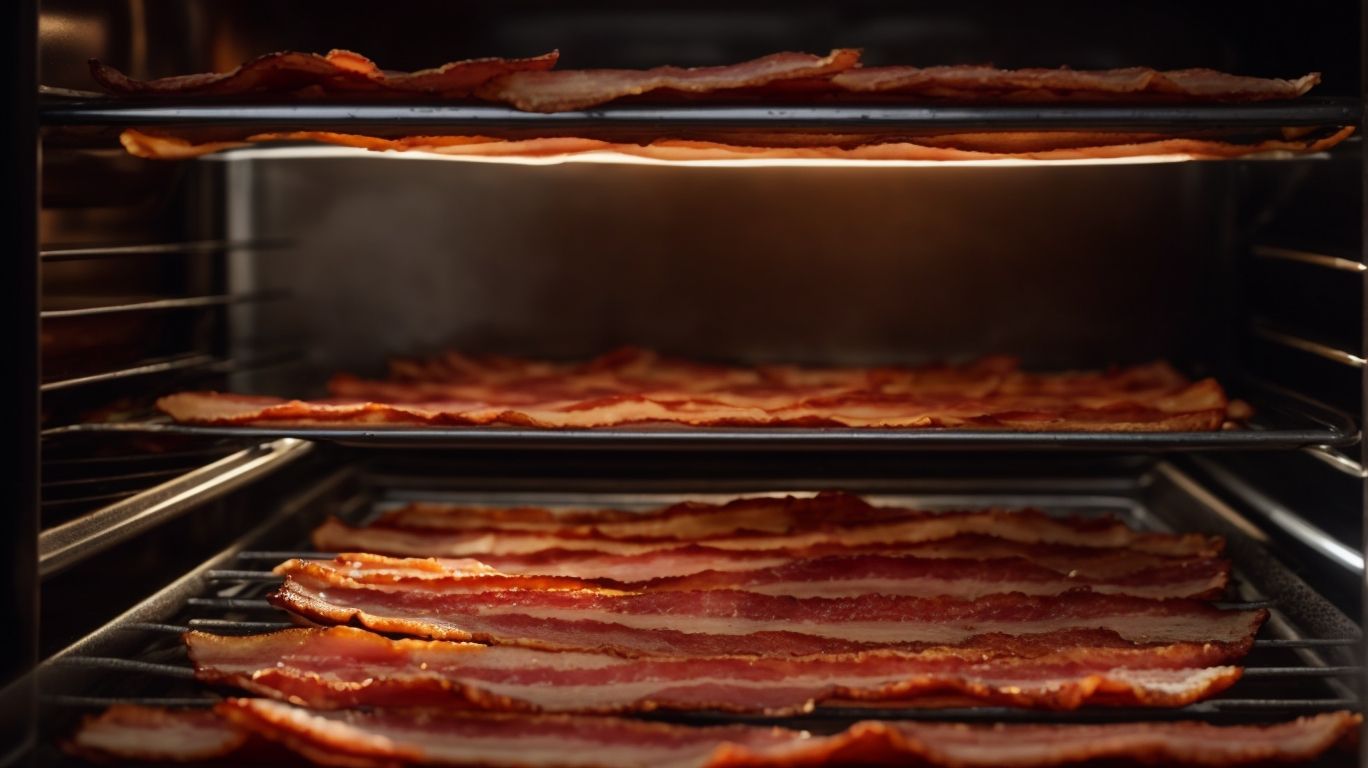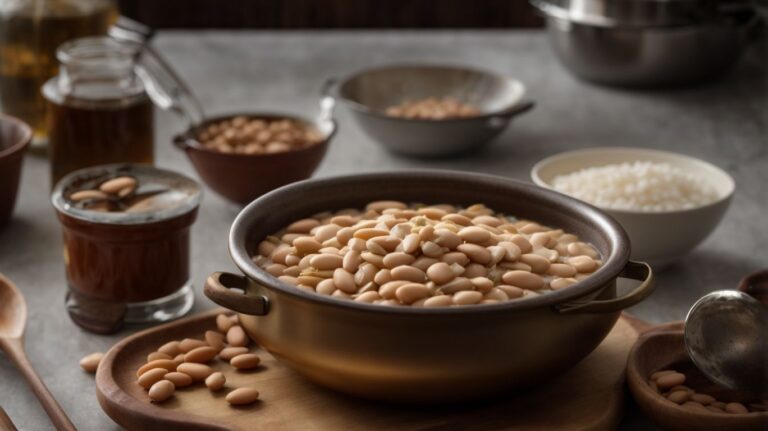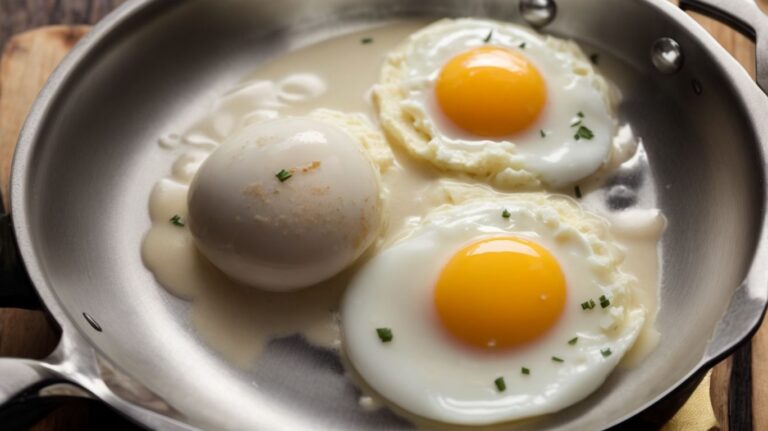How to Cook Bacon in the Oven Without a Rack?
Do you love bacon but dread the mess and hassle of cooking it on the stovetop? Look no further!
We will show you why cooking bacon in the oven is the way to go. From being less messy to providing more even cooking, there are countless benefits to this method.
We will also provide you with a step-by-step guide on how to cook bacon in the oven, along with alternative methods and tips for achieving perfectly cooked bacon every time.
Let’s get cooking!
Key Takeaways:
Why Should You Cook Bacon in the Oven?
Cooking bacon in the oven offers numerous benefits that make it a preferred method for many home cooks.
One significant advantage of cooking bacon in the oven is achieving evenly cooked strips every time. Unlike stovetop cooking, where the bacon can easily curl up or become unevenly crispy, baking it in the oven ensures a consistent texture throughout. This method reduces the mess associated with grease splatter since the bacon cooks on a flat surface in the oven, contained within the pan.
This approach also saves time for the cook, as it requires less monitoring compared to frying in a skillet. You can prepare other components of your meal while the bacon crisps up in the oven, streamlining your cooking process. Additionally, cooking bacon in the oven allows for the collection of bacon grease in a convenient manner, which can be utilized for adding flavor to other dishes or for cooking eggs and vegetables.
Less Messy
Cooking bacon in the oven is a less messy alternative compared to stovetop methods.
One smart tip to elevate your oven-baked bacon game is to use foil-lined pans. By lining your baking pan with foil, you not only make cleanup a breeze but also contain the bacon grease, preventing it from splattering all over your oven. Investing in baking racks can further enhance the efficiency of grease drainage, keeping your bacon crispy and delicious. The combination of foil-lined pans and baking racks is a game-changer in making bacon preparation hassle-free and ensuring a tidy cooking experience.
More Even Cooking
The oven provides a consistent temperature for cooking bacon, resulting in evenly cooked strips.
Baking bacon in the oven at a specific temperature is a game-changer when it comes to achieving that perfect balance of crispy and evenly cooked strips. By using this method, you can avoid the risk of burning the bacon, which can easily happen when cooking it on the stovetop.
When the oven is set to the right temperature, typically around 400°F (200°C), the bacon cooks more evenly as the heat circulates around the strips. This consistent heat application cooks the bacon slowly, rendering it crispy on the outside while keeping it tender on the inside.
Saves Time and Effort
Using the oven to cook bacon is a time-saving method that requires minimal effort.
Cooking bacon in the oven is not only convenient but also results in less mess in the kitchen. This method significantly reduces the cooking time compared to stovetop frying, allowing you to prepare other dishes simultaneously. Simply preheat the oven, arrange the bacon slices on a baking sheet, and let them cook to crispy perfection in just a few minutes. The straightforward process eliminates the need for constant flipping and monitoring, making it an easy way to achieve consistent results every time.
What Do You Need to Cook Bacon in the Oven?

Credits: Poormet.Com – Gregory Adams
To cook bacon in the oven successfully, you need essential tools and ingredients that ensure a delicious outcome.
One of the essential items you’ll need is a baking sheet. This acts as the base for cooking the bacon evenly and efficiently. By using a baking sheet, you allow the bacon to crisp up nicely without causing it to become overly greasy. Aluminum foil is another crucial component in this process, as it helps in easy cleanup and prevents the bacon from sticking to the sheet.
Before placing the bacon on the baking sheet, ensure to line it with aluminum foil for a mess-free experience. This cooking spray helps to prevent the bacon from sticking to the foil, making the removal process much simpler. The combination of aluminum foil and cooking spray ensures that the bacon cooks uniformly and remains intact throughout the baking process.
Baking Sheet
A baking sheet is a versatile tool that provides a flat surface for baking bacon in the oven.
In terms of cooking bacon, using a clean baking sheet is crucial to achieve the best results. The design of the baking sheet allows for even heat distribution, ensuring that the bacon cooks uniformly without any burnt spots. A clean baking sheet prevents the bacon from sticking, making it easier to flip the strips halfway through cooking.
This simple step not only enhances the flavor and texture of the bacon but also makes clean-up a breeze. So, next time you’re cooking bacon in the oven, remember the importance of a clean baking sheet for delicious, hassle-free results.
Aluminum Foil
Aluminum foil is a useful component when cooking bacon in the oven as it helps contain grease and facilitates easy cleanup.
One of the key benefits of using aluminum foil is its ability to create a barrier between the bacon and the baking sheet, preventing the grease from seeping through and causing a mess.
By laying a layer of foil on the baking sheet before placing the bacon strips, you not only protect the pan but also save yourself from the tedious task of scrubbing off stubborn grease stains.
The foil’s non-stick surface makes it effortless to remove the bacon slices without leaving behind any residue, ensuring a hassle-free cleaning process.
Cooking Spray
Using cooking spray on the baking rack can prevent bacon strips from sticking and ensure an easy cleanup process.
When preparing a baking rack to host the bacon strips, the role of cooking spray is crucial. By lightly spraying the rack before laying out the bacon, you create a non-stick surface that allows the bacon to cook evenly without leaving behind a messy residue. This simple step not only enhances the cooking process but also makes cleanup hassle-free. Using a baking rack instead of laying the bacon directly on a baking sheet allows any excess grease to drip off, resulting in a crispier, less greasy finished product.
Paper Towels
Paper towels are essential for draining excess grease from the cooked bacon, ensuring a clean and crispy result.
Once the bacon slices have been cooked to perfection, carefully transfer them onto a layer of paper towels. The paper towels act as absorbent surfaces, soaking up any remaining grease, which not only helps in achieving a cleaner appearance but also plays a significant role in maintaining the bacon’s desired texture.
Through this final step, excess grease is removed, preventing the bacon from becoming soggy. This essential process ensures that each bite of the flavorful bacon remains crisp and delicious. Opting for parchment paper under the bacon strips can elevate the presentation and flavor of this popular breakfast item.
Step-by-Step Guide to Cooking Bacon in the Oven
Follow this detailed step-by-step guide to achieve perfectly cooked bacon in the oven every time.
Start by preheating your oven to 400°F. While the oven is warming up, lay out the bacon strips on a baking sheet lined with parchment paper or aluminum foil for easy cleanup.
Make sure not to overlap the bacon strips so they can cook evenly. Pop the baking sheet into the preheated oven and set your timer for around 15-20 minutes, depending on how crispy you like your bacon.
Halfway through cooking time, flip the bacon strips to ensure uniform crispiness on both sides. Watch the bacon towards the end of the cooking duration to check for desired crispness.
Preheat the Oven
The first step in cooking bacon in the oven is to preheat the oven to the recommended temperature for optimal results.
Preheating the oven before cooking bacon is crucial as it ensures even and consistent cooking throughout the slices. When the oven is heated to the correct temperature, typically around 400°F (200°C), the bacon will start cooking immediately upon placement, creating that crispy texture that many bacon lovers crave.
A well-preheated oven will help render the bacon fat effectively, leading to delectably crisp edges without the bacon becoming overly greasy. The right temperature setting also plays a major role in minimizing shrinkage and maintaining the ideal balance of tenderness and crunchiness in the final product.
Prepare the Baking Sheet
Prepare the baking sheet by lining it with parchment paper or aluminum foil to facilitate easy cleanup and prevent sticking.
Applying a thin layer of parchment paper or foil creates a non-stick surface, ensuring that your baked goods release effortlessly without leaving a mess behind on the sheet.
This simple step not only saves you time scrubbing off hardened residue but also eliminates the need for excessive greasing, making the whole baking process more convenient and hassle-free.
Arrange the Bacon Strips
Lay out the bacon strips in a single layer on the prepared baking sheet, ensuring even cooking and crispiness.
When arranging the bacon strips, make sure they do not overlap, as this can lead to uneven cooking, resulting in some parts being undercooked while others are overcooked.
Spacing them out evenly allows for better airflow around each strip, helping them to crisp up uniformly. This simple step may seem minor but can significantly impact the overall taste and texture of the bacon.
Place the Baking Sheet in the Oven
Carefully place the prepared baking sheet with bacon strips inside the preheated oven to kickstart the cooking process.
After positioning the baking sheet on the rack inside the oven and ensuring the door is closed, you’re ready to start the cooking process. As the oven heats up and the bacon begins to sizzle, you’ll notice a tantalizing aroma filling your kitchen. The strips will gradually start to crisp up, turning a delicious golden brown hue.
Check and Flip the Bacon
Periodically check the bacon in the oven and flip the strips to ensure uniform cooking and crispy texture throughout.
When cooking bacon in the oven, it is crucial to pay attention to flipping the strips at the right time. Flipping the bacon allows both sides to cook evenly, ensuring that you achieve that perfect balance of crispy and chewy textures. If the bacon is not flipped, one side may be overcooked while the other remains undercooked.
Timing is key – typically, it’s recommended to flip the bacon halfway through the cooking time. This ensures that each side gets equal time under the heat, resulting in a deliciously consistent outcome.
Remove and Drain the Bacon
Once the bacon is cooked to perfection, remove it from the oven and drain excess fat using paper towels for a crispy finish.
Let the bacon rest for a few minutes before serving to allow the flavors to settle and the texture to reach its peak. During this time, you can also perform a final check on the bacon slices to ensure they have reached the desired level of crispiness. If needed, you can dab them again with paper towels to soak up any remaining fat for a lighter taste and improved presentation. This attention to detail will elevate the overall quality of your dish, making it a delicious and satisfying treat for your taste buds.
Alternative Methods for Cooking Bacon in the Oven Without a Rack
Explore alternative methods for cooking bacon in the oven when a traditional rack is not available.
One popular alternative to using a traditional rack when baking bacon in the oven is a broiling pan. A broiling pan consists of a top grill section that allows fat to drip down to the lower tray, resulting in crispy bacon without it sitting in its grease. This setup mimics the effects of a baking rack while providing a crispy texture. A drawback of using a broiling pan is that it may not allow for as even cooking as a baking rack.
Using a Broiling Pan
When you don’t have a baking rack, using a broiling pan in the oven can provide a similar cooking experience for your bacon.
Preheat your oven to the desired temperature – usually around 400°F (200°C) works well for cooking bacon. While the oven heats up, place your bacon strips neatly on the broiling pan, ensuring they are not overcrowded to allow for even cooking.
Position the broiling pan in the oven on the mid to upper rack, depending on your oven’s configuration, and set a timer for the recommended cooking duration, typically between 15-20 minutes. It’s essential to keep an eye on the bacon towards the end to avoid burning and achieve that perfect crispiness.
Using a Cooling Rack
A cooling rack placed inside a baking sheet can serve as an effective alternative to the traditional setup for cooking bacon in the oven.
Not only does this method promote better heat circulation around the bacon strips, but it also allows the excess fat to drip down onto the baking sheet, resulting in crispier and less greasy bacon.
- To achieve optimal results, preheat the oven to 400°F and place the rack inside the baking sheet.
- Lay out the bacon strips on the rack, ensuring they are not overlapping to allow for even cooking.
- Cook for around 20-25 minutes or until the bacon reaches your desired level of crispiness, flipping it halfway through to ensure uniform cooking.
Tips and Tricks for Perfectly Cooked Bacon in the Oven

Credits: Poormet.Com – Stephen Green
Enhance your bacon cooking skills with these expert tips and tricks that guarantee perfectly cooked bacon in the oven.
When cooking bacon in the oven, choosing thick-cut bacon can make a significant difference in the final outcome. Thicker slices tend to result in a juicier and more flavorful bacon strip.
To ensure that your bacon cooks evenly and avoids being soggy, consider utilizing a baking rack on top of the baking sheet. This allows the heat to circulate around the bacon, creating a crispy texture.
For a hassle-free cleanup process, incorporating parchment paper beneath the bacon not only prevents sticking but also makes cleaning up a breeze.
Use Thick-Cut Bacon
Opt for thick-cut bacon slices when cooking in the oven to ensure a meatier and flavorful outcome.
Starting off with thick-cut bacon in a recipe can make a substantial difference in the final result. The thickness not only provides more substantial bites but also helps the bacon hold its shape and texture better during the cooking process. As the bacon cooks in the oven, the thickness allows for a perfect balance of crispy edges and tender, juicy center, resulting in a bacon that is both caramelized and meaty.
Add Flavors and Seasonings
Elevate the taste of your crispy bacon by experimenting with flavors and seasonings like maple syrup, honey, or a hint of sriracha.
In terms of enhancing the rich flavor of your bacon, the possibilities are endless. Maple syrup adds a sweet and caramelized touch, perfect for those who enjoy a mix of savory and sweet notes. On the other hand, drizzling some honey over your crispy bacon can bring out a delicate sweetness that complements the salty richness of the meat.
For those seeking a kick of heat, a dash of sriracha can elevate your bacon to a whole new level of flavor. The spicy tang of sriracha paired with the salty crunch of bacon creates a mouthwatering combination that will leave your taste buds tingling.
Use Parchment Paper for Easy Cleanup
Lay parchment paper on the baking rack for easy cleanup and a hassle-free bacon cooking experience.
Using parchment paper when cooking bacon in the oven not only simplifies the cleanup process but also protects your baking tools from grease buildup. The non-stick nature of parchment paper prevents bacon from sticking to the baking rack, making it effortless to remove the bacon slices once they are cooked to perfection. The parchment paper absorbs excess grease, resulting in crispier and less greasy bacon strips. This method also reduces the need for scrubbing and soaking the baking rack, saving you time and effort in maintaining your kitchen equipment.
Frequently Asked Questions
1. Can I cook bacon in the oven without a rack?
Yes, you can! In fact, cooking bacon in the oven without a rack is a popular method that is often preferred over using a rack.
2. What are the benefits of cooking bacon in the oven without a rack?
Cooking bacon in the oven without a rack allows the bacon to cook evenly and allows the fat to render and drip off, resulting in a crispier and less greasy bacon.
3. How do I prepare the pan for cooking bacon without a rack?
To prepare the pan for cooking bacon without a rack, line it with aluminum foil and place a wire cooling rack on top. This will elevate the bacon and allow the fat to drip off.
4. What temperature should I cook bacon in the oven without a rack?
The recommended temperature for cooking bacon in the oven without a rack is 400 degrees Fahrenheit. This allows the bacon to cook evenly and become crispy.
5. How long does it take to cook bacon in the oven without a rack?
The cooking time for bacon in the oven without a rack can vary depending on the thickness of the bacon and your desired level of crispiness. On average, it takes about 15-20 minutes.
6. Can I use parchment paper instead of aluminum foil for cooking bacon in the oven without a rack?
Yes, you can use parchment paper instead of aluminum foil. Simply place the bacon on the parchment paper on top of a baking sheet. Just be sure to monitor the bacon closely as it may cook faster with parchment paper.





